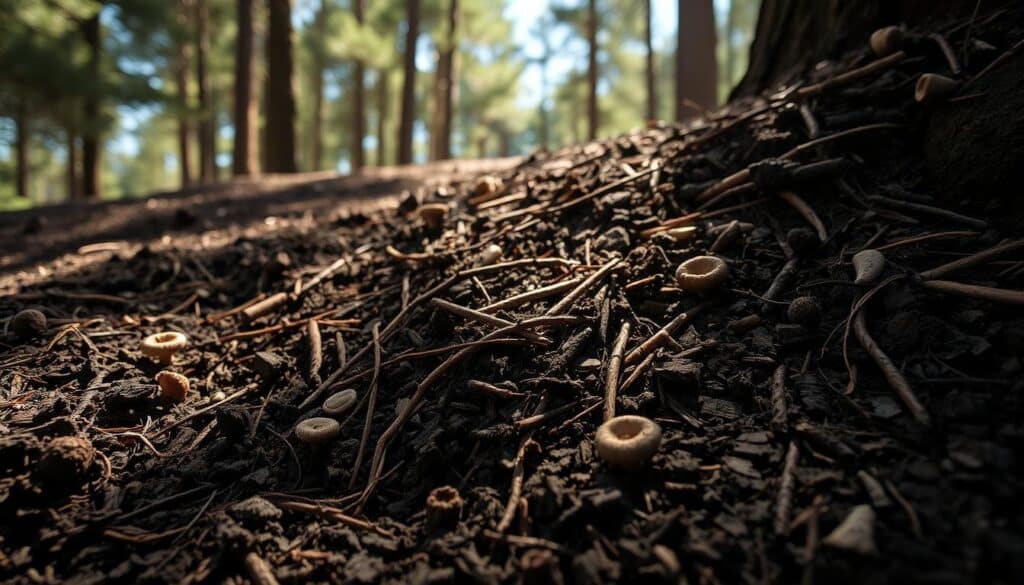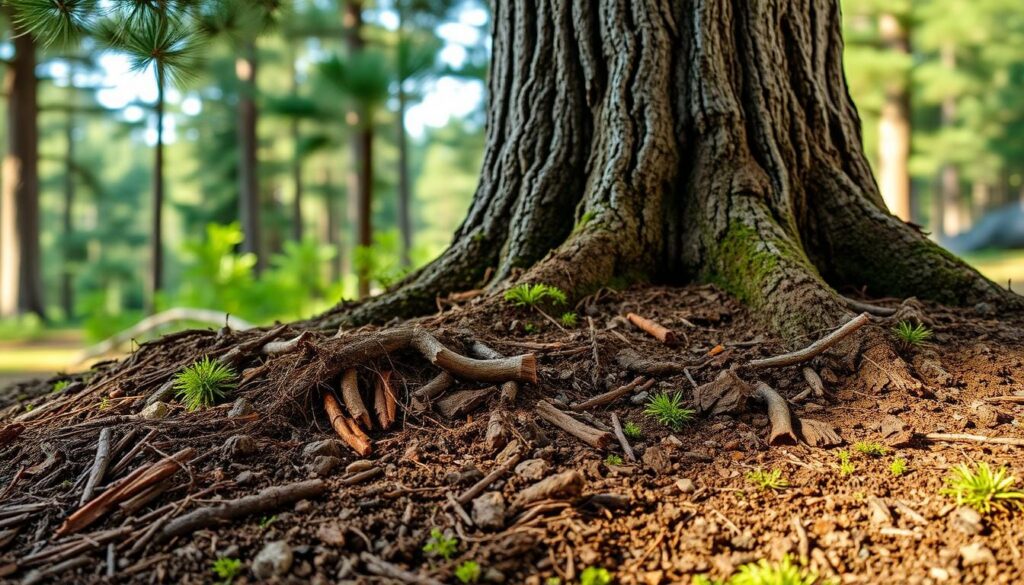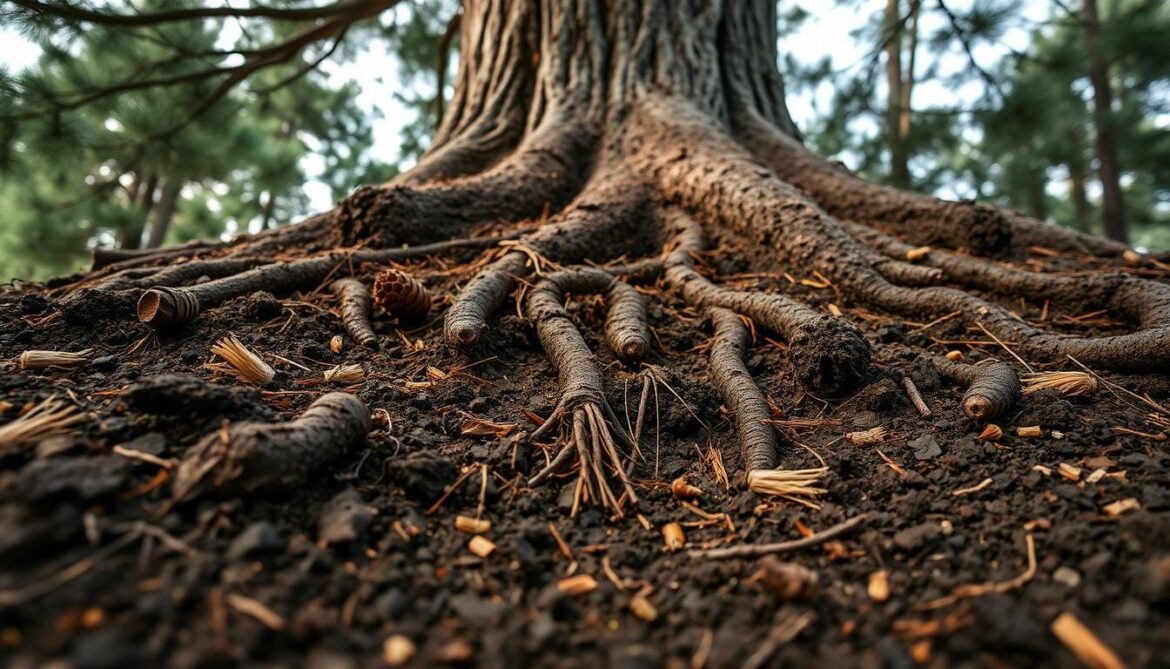Pine trees are a staple in many landscapes, serving as versatile evergreens that provide privacy, interest, and beauty. However, their long-term health and vitality depend significantly on the soil conditions in which they grow.
Different species of pine trees have evolved to thrive in various environments, but they generally prefer well-drained, moderately fertile soil with a specific pH range. Understanding these requirements is crucial for ensuring the optimal growth and preventing common issues that arise from improper soil conditions.
By matching the right pine variety with your existing soil or preparing the soil accordingly, you can significantly enhance the health and longevity of your pine trees.
Key Takeaways
- Pine trees require well-drained, moderately fertile soil for healthy growth.
- The ideal soil pH for pine trees varies by species but generally falls between 4 and 7.
- Proper soil conditions are crucial for the optimal growth and disease resistance of pine trees.
- Different pine species have specific soil requirements.
- Matching the pine variety with the existing soil conditions is essential for their longevity.
The Basics of Pine Tree Soil Needs

Understanding the soil needs of pine trees is essential for creating an optimal growing environment. Pine trees require specific soil conditions to thrive, and meeting these needs is crucial for their health and development.
Soil pH Requirements for Pine Trees
Pine trees generally prefer slightly acidic to acidic soil conditions, with pH levels ranging from 4.0 to 7.0, depending on the species. Contrary to popular belief, pine trees don’t significantly alter soil pH; instead, they naturally grow in locations where the soil is already acidic and suitable for their needs.
Drainage and Soil Structure
Proper drainage is critical for pine trees, as their root systems are highly susceptible to rot and disease in waterlogged conditions. The ideal soil structure for most pine species features a balance of sand, silt, and organic matter, allowing for both adequate drainage and sufficient water retention.
| Soil Characteristics | Ideal Conditions for Pine Trees |
|---|---|
| pH Level | 4.0 – 7.0 |
| Drainage | Well-drained |
| Soil Structure | Balance of sand, silt, and organic matter |
For more information on common pine tree diseases and their relation to soil conditions, visit Chikus Garden.
Ideal Pine Tree Soil Composition

The right soil composition plays a vital role in the development and health of pine trees. A well-balanced soil structure is essential for the optimal growth of these trees.
Soil Texture and Components
The ideal soil texture for most pine trees is loamy, with good drainage properties. This type of soil contains a balanced mix of sand, silt, and clay, providing both aeration and nutrient-holding capacity. As stated by experts, “A loamy soil texture is generally considered optimal for pine tree growth due to its balanced water-holding and drainage properties.”
Organic Matter and Nutrients
Pine trees generally don’t require highly fertile soil and can thrive in moderately fertile conditions. While they benefit from organic matter in the soil, excessive fertilization can harm their growth by promoting weak, disease-prone foliage development.
The Truth About Pine Needles and Soil Acidity
The long-standing myth that pine needles significantly acidify soil has been scientifically disproven. While pine needles themselves are acidic, they don’t substantially alter soil pH as they decompose. In fact, pine needles make excellent mulch for pine trees and other plants, improving moisture retention and gradually adding nutrients to the soil as they break down.
How to Prepare Soil for Pine Tree Planting

To ensure the healthy growth of pine trees, it’s essential to prepare the soil properly before planting. Proper soil preparation not only enhances the tree’s growth but also significantly reduces transplant shock, allowing the tree to establish itself more quickly.
Testing Your Soil
Before planting pine trees, conducting a comprehensive soil test is crucial. This test determines the existing pH level, nutrient content, and drainage characteristics of your soil. Understanding these factors helps in making informed decisions about necessary amendments to create an optimal growing environment for your pine trees.
Amending Soil for Pine Trees
Once you have the results of your soil test, you can proceed to amend the soil as necessary. For most pine species, the soil should be slightly acidic. If your soil is too alkaline, you may need to add elements that lower its pH. Conversely, if it’s too acidic (below 4.0), adding lime can help bring the pH into the ideal range. It’s also beneficial to add compost to improve soil structure and fertility.
Creating Proper Drainage
Pine trees prefer well-drained soil to prevent root rot. For heavy clay soils with poor drainage, creating a slightly raised planting bed or incorporating coarse sand can significantly improve drainage. Proper drainage ensures that the roots of your pine trees receive the right amount of water without being waterlogged, promoting healthy root growth.
Different Pine Species and Their Specific Soil Requirements

Understanding the specific soil requirements for various pine species is crucial for their successful cultivation. Different pine trees have evolved to thrive in a range of soil conditions, from sandy soils to clay-rich areas.
Loblolly Pine Soil Needs
Loblolly pine thrives in soils with some clay content, known as an argillic horizon, and performs best in moderately well-drained conditions. This adaptability makes it suitable for a wide range of soil types across the southeastern United States.
Slash Pine Soil Preferences
Slash pine is remarkably adaptable to various soil conditions, from excessively drained deep sandy soils to poorly drained areas with high organic matter content. This flexibility allows it to grow along the lower coast and parts of the upper coast from the Carolinas to Texas.
Eastern White Pine Soil Conditions
Eastern White Pine prefers well-drained, moderately acidic soils with good moisture retention. It struggles in heavy clay or extremely sandy conditions, making soil selection critical for its growth.
Longleaf and Other Pine Varieties
Longleaf pine grows best on upland sites with some clay content, although it can be planted on deep sands, where it grows more slowly. Other pine species, like Sand pine and Virginia pine, also have specific soil preferences. Sand pine is adapted to deep, excessively well-drained sandy soils, while Virginia pine can grow in sandy, rocky soils as well as heavy clay environments. Understanding these species-specific needs is key to successful forest management and landscape planting.
By recognizing the unique soil requirements of different pine species, individuals can make informed decisions about which trees to plant in their area, ultimately supporting healthy tree growth.
Maintaining Healthy Pine Tree Soil
The key to growing thriving pine trees lies in understanding and maintaining the right soil conditions. Proper soil maintenance is crucial for the health and longevity of your pine trees.
To achieve this, it’s essential to maintain proper soil moisture, especially during the establishment phase and periods of drought. Water newly planted pine trees every couple of days for the first month, then gradually reduce the frequency to once a week or more frequently during dry spells.
Mulching around pine trees with a 2-3 inch layer of organic material, such as pine needles, helps conserve soil moisture, suppress weeds, and moderate soil temperature. This practice also gradually improves soil structure over time.
It’s also important to monitor soil pH every 2-3 years to ensure it remains within the optimal range for your specific pine tree species. Additionally, protecting the critical root zone from compaction is essential, as soil compaction can restrict oxygen availability and impede water penetration to the roots.
In sandy areas, incorporating organic matter can help improve water retention while maintaining good drainage, which pine trees require. By following these guidelines and adopting seasonal soil maintenance practices, such as refreshing mulch in spring, you can create a consistent growing environment that supports steady, healthy tree growth.

